Filter by
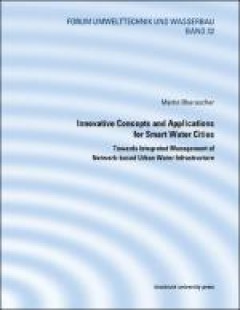
Innovative Concepts and Applications for Smart Water Cities: Towards Integrat…
Smart cities are emerging worldwide, including economic, institutional, social, and technical concepts in interaction with existing infrastructure to achieve sustainability and increase quality of life. Additionally, digitalisation projects in the field of urban water infrastructure (UWI) aim to increase capacity of existing infrastructure to deal with future challenges caused by climate change…
- Edition
- Ed. 1
- ISBN/ISSN
- 9783991060840
- Collation
- 144
- Series Title
- Forum Umwelttechnik und Wasserbau, 32
- Call Number
- 574.5 OBE i
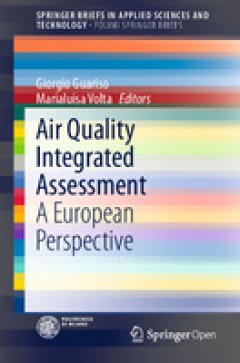
Air Quality Integrated Assessment: A European Perspective
air quality; air pollution; environmental analysis
- Edition
- -
- ISBN/ISSN
- 9783319333496
- Collation
- -
- Series Title
- -
- Call Number
- -
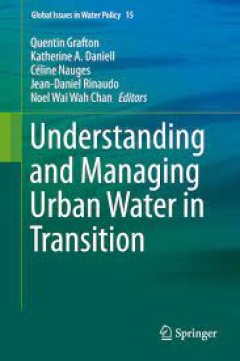
Understanding and Managing Urban Water in Transition
This book examines changes and transitions in the way water is managed in urban environments. This book originated from a joint French-Australian initiative on water and land management held in Montpellier, France. The book delivers practical insights into urban water management. It links scientific insights of researchers with the practical experiences of urban water practitioners to understan…
- Edition
- -
- ISBN/ISSN
- 978-94-017-9801-3
- Collation
- -
- Series Title
- -
- Call Number
- -
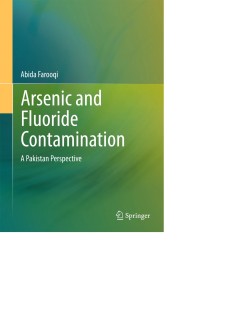
Arsenic and Fluoride Contamination: A Pakistan Perspective
This book presents an up-to-the-minute overview of arsenic and fluoride pollution of soil and groundwater in Pakistan. It includes the author’s doctoral dissertation on Lahore as a case study and describes the mechanism of pollution on the basis of the findings in that area. The book highlights the concrete situation in Pakistan – including the severity of the problem, its health effects an…
- Edition
- Ed. 1
- ISBN/ISSN
- 978-81-322-2298-9
- Collation
- XI, 147
- Series Title
- -
- Call Number
- 553.79 FAR a

Marginality: Addressing the Nexus of Poverty, Exclusion and Ecology
Environment, general; Environmental Law/Policy/Ecojustice; Environmental Economics; Social Policy
- Edition
- -
- ISBN/ISSN
- 9789400770607
- Collation
- -
- Series Title
- -
- Call Number
- -

Himalayan Nature and Tibetan Buddhist Culture in Arunachal Pradesh, India A …
This is the first book to systematically describe the formation and historical changes of the Monpa people’s area (Monyul) through its nature, society, culture, religion, agriculture and historically deep ties with Bhutan, Tibet and the Tibetan Buddhist faith. The state of Arunachal Pradesh is located in the northeastern part of India, surrounded by the borders of Assam, Bhutan, and Tibet (Ch…
- Edition
- -
- ISBN/ISSN
- 978-4-431-55491-2
- Collation
- XIV, 196
- Series Title
- -
- Call Number
- 910

Routledge Handbook of Food as a Commons
This Handbook provides the first comprehensive review and synthesis of knowledge and new thinking on how food and food systems can be thought, interpreted and practiced around the old/new paradigms of commons and commoning. The overall aim is to investigate the multiple constraints that occur within and sustain the dominant food and nutrition regime and to explore how it can change when differe…
- Edition
- 1st Edition
- ISBN/ISSN
- 9781315161495
- Collation
- 424 halaman
- Series Title
- -
- Call Number
- 641 ROU

Impacts of Climate Change on Rainfall Extremes and Urban Drainage Systems
Impacts of Climate Change on Rainfall Extremes and Urban Drainage Systems provides a state-of-the-art overview of existing methodologies and relevant results related to the assessment of the climate change impacts on urban rainfall extremes as well as on urban hydrology and hydraulics. This overview focuses mainly on several difficulties and limitations regarding the current methods and discuss…
- Edition
- -
- ISBN/ISSN
- 9781780401256
- Collation
- -
- Series Title
- -
- Call Number
- -

A Handbook to the Geology of Cambridgeshire For the Use of Students
Beneath Cambridgeshire's towns, villages, farmland, hills, fens and waterways lie the rocks that display a variety of geological landscapes. Basement rocks are buried under sandy deposits from ancient tropical seas. The rising and tilting of the land due to large-scale movements permitted water flows that produced gradual alterations. Glaciation, erosion and dramatic variations in climate all w…
- Edition
- -
- ISBN/ISSN
- 9780511693410
- Collation
- -
- Series Title
- -
- Call Number
- -
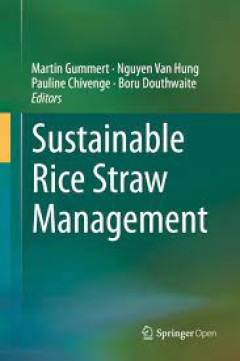
Sustainable Rice Straw Management
This open access book on straw management aims to provide a wide array of options for rice straw management that are potentially more sustainable, environmental, and profitable compared to current practice. The book is authored by expert researchers, engineers and innovators working on a range of straw management options with case studies from Vietnam, the Philippines and Cambodia. The book is …
- Edition
- -
- ISBN/ISSN
- 2020
- Collation
- -
- Series Title
- -
- Call Number
- -
 Computer Science, Information & General Works
Computer Science, Information & General Works  Philosophy & Psychology
Philosophy & Psychology  Religion
Religion  Social Sciences
Social Sciences  Language
Language  Pure Science
Pure Science  Applied Sciences
Applied Sciences  Art & Recreation
Art & Recreation  Literature
Literature  History & Geography
History & Geography